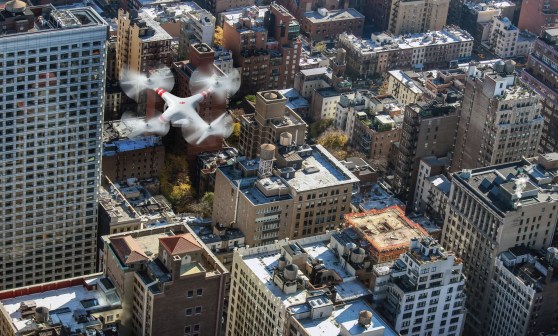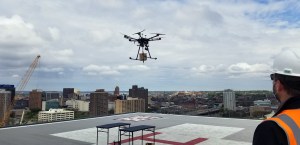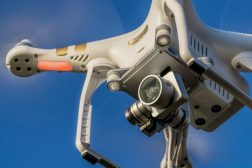Game of drones: states battle for FAA test sites
By the end of this calendar year, the Federal Aviation Administration will designate six unmanned aerial vehicle test sites around the country.
Those sites are expected to bring a large boost in the local economies of those selected as companies such as Northrop Grumman, Boeing and Lockheed Martin that are major players in the UAV space are likely to set up shop at the location.
With that in mind, 37 groups from state and local governments are jockeying for position with the FAA to become one of those six test sites, hoping they can be one of the lucky chosen.
“Unmanned aircraft can help us meet a number of challenges, from spotting wildfires to assessing natural disasters,” said then-U.S. Transportation Secretary Ray LaHood at the announcement of the program earlier this year. “But these test sites will help us ensure that our high safety standards are maintained as the use of these aircraft becomes more widespread.”
Unmanned aircraft systems come in a variety of shapes and sizes and serve diverse purposes. They may have a wingspan as large as a Boeing 737 or smaller than a radio-controlled model airplane. Regardless of size, the responsibility to fly safely applies equally to manned and unmanned aircraft operations.
Because they are inherently different from manned aircraft, introducing UAS into the nation’s airspace is challenging for both the FAA and aviation community. UAS must be integrated into a National Airspace System that is evolving from ground-based navigation aids to a GPS-based system in NextGen.
Safe integration of UAS involves gaining a better understanding of operational issues, such as training requirements, operational specifications and technology considerations.
Through the National Defense Authorization Act and the 2012 FAA Reauthorization bill, Congress mandated that the FAA establish UAS test sites.
The program mandates the FAA select six test sites do the following:
- Safely designate airspace for integrated manned and unmanned flight operations in the national airspace system
- Develop certification standards and air traffic requirements for unmanned flight operations at test ranges
- Coordinate with and leverage the resources of the NASA and the Department of Defense
- Address both civil and public unmanned aircraft systems
- Ensure that the program is coordinated with the Next Generation Air Transportation System
- Ensure the safety of unmanned aircraft systems and related navigation procedures before they are integrated into the national airspace system.
Lt. Gov. Drew Wrigley and North Dakota are among one of the two dozen states that have thrown their hats into the ring with the FAA, many of whom are taking aggressive steps to improve their allure.
For its part, North Dakota Gov. Jack Dalrymple is trying to get $5 million from his state’s legislation toward development efforts. He also signed an executive order establishing the Northern Unmanned Systems Authority, a six-member commission chaired by Wrigley to advance North Dakota’s UAS opportunities. The commission will also provide oversight if the state is designated to operate a UAS test site.
“Receiving the FAA test site designation would solidify North Dakota’s position at the front line of the rapidly growing UAS industry,” North Dakota Lt. Gov. Drew Wrigley said last week at the annual Association for Unmanned Vehicle Systems International Conference in Washington D.C.
Other states are making efforts as well.
Nevada recently signed a development deal with the Canadian provide of Alberta, one of Canada’s leading regions in the UAV space, to share best practices in hopes of improving their bid.
“Aerospace remains one of Nevada’s most developed economic development industries,” said Steve Hill, director of the Governor’s Office of Economic Development in Nevada. “Within this sector, unmanned vehicle systems offer the most potential for future development.”
Other states such as California, Oklahoma, New Mexico, Utah, Ohio and Idaho are expected to be major players in the final decision as well.
“If we can get UAVs here for testing and then research and development, I think that’s marvelous,” said Wilmington, Ohio Mayor Randy Riley in an interview with WCPO. “Because that’s commerce, that’s business. That brings people to Wilmington and Clinton County.”
If chosen, the economic impact on Ohio could be significant. The Dayton Development Coalition, which put together the state’s proposal to the FAA, estimated it at as much as $264 million per year by 2025, along with bringing in 2,700 new jobs.






